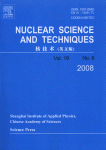
Nuclear Science and Techniques
Scope & Guideline
Pioneering Research for a Sustainable Nuclear Future
Introduction
Aims and Scopes
- Nuclear Physics and Structure:
Research on nuclear structure, including the properties and interactions of isotopes and nuclear reactions, often employing theoretical models and experimental techniques. - Radiation Detection and Measurement:
Development and optimization of detectors and measurement systems for various types of radiation, aimed at improving detection sensitivity and accuracy. - Nuclear Energy Systems and Technology:
Studies related to nuclear reactor design, fuel cycles, safety analysis, and the overall performance of nuclear energy systems. - Medical Applications of Nuclear Science:
Exploration of nuclear techniques in medicine, including radiation therapy and medical imaging, emphasizing the development of new methodologies and technologies. - Computational Methods in Nuclear Science:
Utilization of computational techniques, such as Monte Carlo simulations and machine learning, for modeling nuclear processes and analyzing experimental data. - Environmental and Safety Assessments:
Research focusing on the environmental impact of nuclear technologies and safety assessments related to nuclear facilities. - Advanced Materials and Nanotechnology:
Investigations into the properties of materials used in nuclear applications, including their behavior under radiation exposure and development of novel materials.
Trending and Emerging
- Machine Learning and AI in Nuclear Science:
An increasing number of publications are utilizing machine learning and artificial intelligence to enhance data analysis, improve detection systems, and optimize reactor designs. - Advanced Radiation Detection Techniques:
There is a growing emphasis on developing sophisticated radiation detection technologies, including novel materials and methodologies for improved sensitivity and specificity. - Nuclear Medicine Innovations:
Research in the field of nuclear medicine is expanding, focusing on new therapeutic techniques and diagnostic imaging advancements. - Sustainable Nuclear Energy Solutions:
A notable trend towards sustainability in nuclear energy, including studies on thorium reactors and advanced fuel cycles, reflecting global energy transition goals. - High-Performance Computing Applications:
The application of high-performance computing in nuclear simulations and data processing is on the rise, indicating a trend towards more complex and detailed modeling capabilities. - Environmental Impact Studies of Nuclear Technologies:
Research addressing the environmental implications of nuclear technologies is gaining traction, focusing on safety assessments and ecological impacts.
Declining or Waning
- Traditional Nuclear Physics:
There appears to be a decrease in publications focused solely on traditional nuclear physics topics, as the journal shifts towards more applied research and interdisciplinary studies. - Low-energy Nuclear Reactions:
Research on low-energy nuclear reactions has diminished, possibly due to a growing emphasis on high-energy and complex nuclear interactions that have broader applications. - Nuclear Waste Management:
Although still relevant, papers specifically addressing nuclear waste management strategies have become less frequent, as the focus may have moved toward innovative recycling and reuse technologies. - Fundamental Nuclear Theory:
There is a noticeable reduction in studies dedicated to purely theoretical approaches in nuclear physics, with a trend towards integrating theory with practical applications.
Similar Journals

ATW-INTERNATIONAL JOURNAL FOR NUCLEAR POWER
Bridging Theory and Application in Nuclear PowerATW - International Journal for Nuclear Power is a premier journal dedicated to advancing the understanding and application of nuclear technology within the energy sector. Published by INFORUM Verlags-Verwaltungsgesellschaft mbH, this esteemed publication provides a platform for researchers, professionals, and students to disseminate cutting-edge research, practical applications, and critical analyses related to nuclear power generation. Although it has discontinued coverage in Scopus since 2012, its long-standing contributions to the field since 1996 underscore its significance and relevance. The journal aims to bridge the gap between theoretical insights and real-world applications, ensuring that stakeholders are well-informed on the latest trends, safety protocols, and innovations in nuclear power. With a commitment to fostering knowledge dissemination and collaboration, ATW continues to be an essential resource for anyone involved in the nuclear energy landscape.

Nuclear Materials and Energy
Advancing the Future of Nuclear Science and EngineeringNuclear Materials and Energy is a premier open-access journal published by Elsevier, dedicated to the dynamic fields of nuclear science and materials engineering. Since its inception in 2015, the journal has made significant strides in disseminating cutting-edge research, establishing itself as a vital resource for researchers and professionals alike. With a commendable impact factor and ranked in the Q2 category for both Materials Science (miscellaneous) and Nuclear and High Energy Physics, and impressively in Q1 for Nuclear Energy and Engineering in 2023, Nuclear Materials and Energy stands out in the academic community. This journal aims to bridge the gap between fundamental research and practical applications, promoting innovative solutions in the efficient utilization of nuclear materials and energy technologies. Open access since 2015, the journal ensures wide dissemination and accessibility of crucial findings, making it an essential platform for advancing knowledge and fostering collaboration in these pivotal fields.
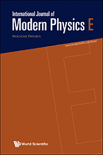
INTERNATIONAL JOURNAL OF MODERN PHYSICS E
Fostering Global Collaboration in Physics and AstronomyThe INTERNATIONAL JOURNAL OF MODERN PHYSICS E, published by WORLD SCIENTIFIC PUBL CO PTE LTD, serves as a distinctive platform for the dissemination of high-quality research in the fields of Nuclear and High Energy Physics, as well as Physics and Astronomy. With an ISSN of 0218-3013 and covering a timeline from 1996 to 2024, the journal has established itself within the academic community, achieving a respectable Q3 ranking in its respective categories for 2023, underscoring its commitment to advancing knowledge in modern physics. Although it operates without an open access model, the journal's curated content is accessible to a wide audience of researchers, professionals, and students engaged in cutting-edge physics. Set in Singapore, this journal not only contributes to scholarly discussions but also fosters a global collaboration among physicists, making it an invaluable resource for those seeking to deepen their understanding and contribute to ongoing dialogues in the scientific community.
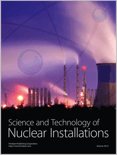
Science and Technology of Nuclear Installations
Unveiling Breakthroughs in Nuclear EngineeringScience and Technology of Nuclear Installations, published by HINDAWI LTD, is an esteemed scholarly journal specializing in the dynamic field of nuclear energy and engineering, with an ISSN of 1687-6075 and an E-ISSN of 1687-6083. Since transitioning to an Open Access model in 2007, the journal has significantly contributed to the dissemination of innovative research and practical applications in nuclear technology, attracting a global audience from both academia and industry. Based in Egypt, this prominent journal serves as a vital platform for researchers seeking to explore advanced methodologies, cutting-edge technologies, and the sustainable development of nuclear installations. Achieving a commendable Q2 category ranking in Nuclear Energy and Engineering and positioning at #35/77 in Scopus rankings (55th percentile) underscores its influential presence within the scientific community. With a publication horizon extending from 2008 to 2024, the journal remains committed to fostering collaboration and innovation in nuclear science, making it an invaluable resource for researchers, professionals, and students alike.

Radiation Detection Technology and Methods
Transforming Nuclear Science Through Innovative ResearchRadiation Detection Technology and Methods is a prominent academic journal published by Springer Singapore Pte Ltd, dedicated to advancing the field of nuclear and high-energy physics, as well as nuclear energy and engineering. Established in 2017, this journal provides a platform for the dissemination of pioneering research and innovative methodologies in radiation detection technology. As of 2023, it holds a commendable Q2 ranking in both the categories of Nuclear and High Energy Physics and Nuclear Energy and Engineering, underscoring its significance in fostering scholarly discourse within these vital fields. With ISSN 2509-9930 and E-ISSN 2509-9949, the journal aims to cater to a diverse audience of researchers, professionals, and students, emphasizing open access to knowledge. The journal's contributions are particularly crucial for those engaged in the development of safer and more efficient radiation detection techniques, ultimately bridging the gap between theory and practical applications in energy security and health physics. For researchers seeking a dedicated outlet for their work, Radiation Detection Technology and Methods represents an invaluable resource and an opportunity to influence the future of radiation science.

RADIATION PHYSICS AND CHEMISTRY
Unveiling the Secrets of Radiation ScienceRADIATION PHYSICS AND CHEMISTRY, published by Pergamon-Elsevier Science Ltd in the United Kingdom, stands as a leading journal in the field of radiation studies, bridging fundamental research and practical applications. With an impressive 2023 Scopus Rank of 11 out of 58 in the Radiation category, reflecting an 81st percentile ranking, the journal maintains a robust reputation within the scientific community. The journal focuses on the experimental and theoretical aspects of radiation physics, chemistry, and their interdisciplinary applications, providing critical insights that aid the advancement of knowledge in various domains, including nuclear energy, materials science, and healthcare. Although open access options are not available, the journal garners substantial readership and engagement from researchers, professionals, and students alike, as it publishes innovative studies and reviews from 1985 through to its anticipated conclusion in 2025. The ISSN for the journal is 0969-806X, with the E-ISSN being 1879-0895, ensuring global accessibility to cutting-edge research in radiation science.

Nuclear Physics and Atomic Energy
Unveiling the potential of high-energy physics.Nuclear Physics and Atomic Energy is a reputable open-access journal that focuses on the fields of nuclear physics and high-energy physics, providing a forum for researchers, professionals, and students to share their findings and advancements. Published by the Institute of Nuclear Research, National Academy of Sciences of Ukraine, this journal has been committed to disseminating knowledge since its inception in 2006, ensuring that scientific advancements remain accessible to a global audience. With an ISSN of 1818-331X and an E-ISSN of 2074-0565, the journal features a diverse array of articles that span the continued exploration and application of nuclear phenomena. Although currently categorized in the Q4 quartile for Nuclear and High Energy Physics in 2023, the journal is steadily working towards increasing its impact and engagement within the academic community. With a Scopus rank of #74 out of 87 in its category, it serves as a valuable resource for advancing crucial research in a vital scientific area. Researchers are encouraged to contribute their innovative studies to foster collaboration and knowledge sharing in this dynamic field.

NUCLEAR INSTRUMENTS & METHODS IN PHYSICS RESEARCH SECTION B-BEAM INTERACTIONS WITH MATERIALS AND ATOMS
Connecting Theory and Experiment in Nuclear ResearchNUCLEAR INSTRUMENTS & METHODS IN PHYSICS RESEARCH SECTION B-BEAM INTERACTIONS WITH MATERIALS AND ATOMS, published by Elsevier, is a pivotal journal in the fields of nuclear and high energy physics as well as instrumentation. With an ISSN of 0168-583X and an E-ISSN of 1872-9584, this journal has been a significant contributor to the scientific community since its inception in 1983. Covering an extensive range of topics related to beam interactions with various materials and atoms, the journal serves as an essential resource for researchers, professionals, and students alike. It holds a respectable Q3 category ranking in both instrumentation and nuclear high energy physics as of 2023, indicating its relevance and quality within these domains. While the journal currently does not offer open access options, its invaluable findings are accessible through numerous academic libraries and institutions. With the publication's emphasis on fostering advancements in experimental techniques, instrumentation developments, and theoretical insights, it undoubtedly plays a crucial role in the ongoing progress and innovation in the field.
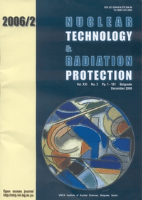
Nuclear Technology & Radiation Protection
Exploring the frontiers of nuclear energy and safety.Nuclear Technology & Radiation Protection is a distinguished open-access journal published by the VINCA Institute of Nuclear Sciences, Serbia, dedicated to advancing knowledge in the fields of nuclear energy and radiation safety. Since its inception in 2002, the journal has been an essential resource for researchers, professionals, and students, offering a platform for the dissemination of high-quality research that contributes to the safe and efficient use of nuclear technology. With an impressive Q2 ranking in both the Nuclear Energy and Engineering and Safety, Risk, Reliability and Quality categories for 2023, the journal reflects a commitment to excellence and relevance within its scope. It serves as a pivotal forum for sharing innovative findings, addressing current challenges, and contributing to the global discourse on nuclear safety and technology. The journal is indexed in Scopus, enhancing its visibility and impact in the academic community. By facilitating unrestricted access to its articles, Nuclear Technology & Radiation Protection continues to foster collaboration and engagement among scholars in the nuclear science domain.
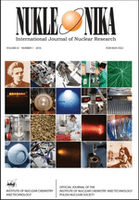
NUKLEONIKA
Fostering Collaboration in Interdisciplinary ResearchNUKLEONIKA, published by SCIENDO, is a leading open access journal that has been serving the scientific community since its establishment in 1968. Focused on the domains of Nuclear and High Energy Physics, Condensed Matter Physics, and Nuclear Energy and Engineering, this journal provides a platform for innovative research and technological advancements in a variety of interdisciplinary fields. With an impressive history of publications and a current Q3 ranking in several categories, including Safety, Risk, Reliability and Quality and Waste Management and Disposal, NUKLEONIKA is recognized for its significant contributions to scientific discourse. Open access since 2014, the journal ensures that all research outputs are freely available, facilitating broad dissemination and accessibility for researchers, professionals, and students alike. Located in the heart of Warsaw, Poland, NUKLEONIKA aims to inspire collaborative efforts and foster a deeper understanding of complex physical phenomena and their practical implications.